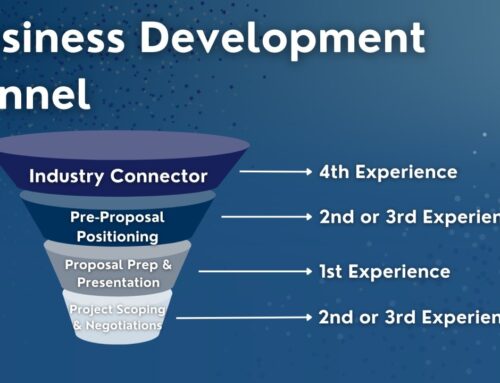In today’s landscape, company culture isn’t just a buzzword – it’s the foundation of long-term success. An exceptional company culture unifies, engages, and motivates teams, improving business performance and productivity.
Perhaps most importantly, the culture in your organization dictates whether you’ll be able to attract and retain talent effectively. Skill shortages are a continuing problem; businesses can’t afford to lose top talent due to a toxic workplace. According to MIT, culture is ten times more important than compensation when predicting turnover.
When company culture significantly impacts the growth and sustainability of your business, you can’t afford to leave success to chance. The days of “culture by default” are gone, and organizations must ask whether they’re shaping their culture with intention and focus.
It’s time for the era of “culture by design.”
Culture by Design – A Roadmap
Company culture is the heart of an organization. It isn’t defined exclusively by unique benefits or office space perks. Culture culminates the practical and persistent implementation of ideas, best practices, and shared values within your company.
As frameworks like the McKinsey Organizational Health Index and MIT Sloan’s scientific definition of culture outline, company culture connects all of the crucial parts of an organization, from your business goals to your company’s inherent values and your people.
It needs to influence everything from your approach to hiring employees, developing teams, managing staff, and enabling work-life balance.
“Culture by design” intentionally shapes the behaviors, beliefs, and environment that define a workplace. Instead of allowing culture to form randomly by default, leaders deliberately craft workplace conditions to align with a company’s goals, vision, and needs of their people.
This involves creating specific practices, policies, and rituals that foster desired attitudes and behaviors. It’s all about building a space where employees thrive, feel valued, stay committed, and contribute to long-term success.
Though implementing culture by design can seem complex, it’s crucial for business survival. Strong company cultures reduce turnover, help attract top talent to your team and directly impact business bottom lines. According to Bain, getting company culture right can increase EBIT growth by up to 500% and revenue by a factor of ten.
Foundation: Core Values and Vision
The heart of a strong company culture is defined by shared values and a clear vision. For individuals on your team to find purpose and value in their roles, they must feel they’re collectively contributing towards a shared goal and understand your company’s priorities.
The Value Definition Process Your company’s values should guide actions, decisions, and behaviors throughout the workforce. Core values can vary depending on your business. Many companies prioritize trust, honesty, integrity, and accountability.
Diversity, equity, and inclusion initaives (which comply with applicable laws) also often significantly impact company values; many potential employees in transportation advisory care very much about these concepts.
Fortunately, some tools can help businesses define their values. The Barrett Values Center/Centre 7-Level consciousness model explores values across various levels of consciousness, considering everything from relationships to self-esteem and internal cohesion.
Designing an Implementation Framework Identifying values is the first step in this process, and companies must also comprehensively embed these values into the company culture and align them with an overall vision for success.
This can involve creating documents and policies that help to communicate values, like Netflix’s culture deck. It could also mean implementing training initiatives to reinforce values, such as programs that enhance employee cultural recognition and collaboration.
Adjusting management strategies is one of the most important steps in implementing values into a company culture. Google’s Project Oxygen found that effective leadership and collaboration on management strategies drives team success and improve team cohesion. Business leaders need to model and champion values for team members in everything they do.
Metrics and Measurement Once values and a clear vision are embedded into the company’s operations, leaders also need a way to measure how those values impact the overall business. Tools like the “Cultural Values Assessment” can be valuable here, as they offer a way to evaluate alignment between personal values, current company culture, and the desired cultural environment.
This helps leaders understand where culture thrives in the business and where additional transformation is needed. Business leaders can also experiment with solutions like the Denison culture survey, which delivers insights into how a company’s culture supports performance and alignment with strategic growth, focusing on consistency and adaptability. thoughts.
Implementation: Design Practices
Once you’ve defined the core values and vision for your business and its company culture, the next step is to start implementing practices that bring your desired culture to life. Every aspect of the employee experience, from hiring to work policies and recognition strategies, needs to be aligned with the desired culture you want to achieve.
Hiring for Cultural Success Adjusting your hiring strategy to improve and optimize company culture isn’t just about looking for candidates with the same characteristics as existing, successful employees. It’s about finding team members who contribute to your desired company culture.
Companies can use various methods to improve results here. Working with specialist recruitment teams to help minimize bias in hiring decisions can lead to a more diverse and inclusive culture. Experimenting with behavioral interview questions can also help you identify how well candidates will respond to the situations and experiences they’ll face in a role.
Industry leaders can also embed cultural values and ideals into the candidate assessment process. For instance, HubSpot evaluates candidates based on their ability to thrive in a fast-paced, collaborative environment rather than focusing entirely on technical skills.
Ensuring Onboarding Excellence A strong onboarding strategy is more than an excellent way to improve employee experiences and set team members up for success in their roles. It’s also an opportunity to define values and expectations, introduce staff to cultural norms, and rapidly embed employees into team settings.
Companies like LinkedIn and Airbnb use onboarding strategies to immerse employees in the company culture. They use storytelling and shared experiences to introduce and explain values and encourage teams to reflect on how they can contribute to the community experience in the workplace.
During an onboarding strategy, introduce teams to how you measure success. Discuss development strategies alongside long-term business and personal goals to help them connect with the team members they’ll be working with on a deeper level and ensure they can envision a long-term future with your company.
Implementing Recognition Systems Employee recognition strategies help to keep teams engaged, reduce turnover rates, and improve productivity. More importantly, they are a valuable way to reinforce behaviors that support a positive company culture.
Think about how you share feedback with staff and manage performance. Are your teams left waiting months for a meeting or review? Can you update your strategy with regular check-ins between managers and employees to create a more agile, supportive culture?
According to Deloitte, 90% of companies that redesign performance management with a focus on regular, consistent feedback see direct improvements in engagement. Remember, small things, like a “thank you” for a positive action, can go a long way.
Managing the Remote/Hybrid Shift Nurturing a positive culture can be complex in any business. For companies embracing hybrid and flexible working strategies, it can be difficult to keep teams aligned, focused on the same vision, and engaged over time.
Plan to ensure that remote and hybrid workers are as deeply ingrained into the company culture as in-office employees. Invest in regular meetings with team members and introduce new communication and collaboration tools to bridge the gaps between staff. Ensure everyone is involved in decision-making processes and business growth, regardless of location.
A commitment to transparency, constant and consistent communication, and regular team building will ensure culture can continue to thrive in a hybrid workplace.
Maintenance: Sustaining Cultural Health
Finally, creating and implementing a strong company culture is just the beginning. Sustaining cultural health requires ongoing effort, careful monitoring, and adaptability. Maintaining your company culture requires a few key steps:
Using Measurement Tools Take advantage of the measurement tools available to help you understand your company culture’s impact on your organization. For instance, Quinn’s “Competing Values Framework” helps monitor behavioral patterns and values to show whether your culture contributes to performance and innovation.
Deloitte’s culture change monitoring system makes it easy to track cultural shifts using employee surveys, performance data, and focus groups. You can even use McKinsey’s Organizational Health Index to track performance and engagement metrics.
Embracing Feedback Mechanisms Feedback goes two ways in an effective business. The best way to determine how well your company culture works is to gather genuine and authentic employee insights. For instance, Microsoft regularly uses the “Employee Signals” framework to help business leaders identify trends and adjust policies to sustain morale and engagement.
Make sure it’s easy for team members to share their thoughts, whether they have recommendations for new workplace policies, concerns about current processes, or complaints to share. Host regular culture meetings, but ensure team members have a way to submit feedback anonymously, too.
Preparing for Crisis Points New challenges emerge every day — case in point for our consulting clients which focus on federally-funded initiatives. Political changes, economic conditions, and other factors can affect your company’s mood and culture. A strategy for dealing with sudden issues can help reduce disruption.
For instance, you could implement policies for managing employee stress and improving well-being during difficult times. You might even provide business leaders and staff training focused on adaptability, emotional resilience, and purpose-driven leadership.
Consistent and persistent communication in times of change is also helpful. It is important to communicate that leadership is aware and “on top of”contextual issues that may affect employees’ ongoing work.
Designing Culture with Intention
Your company’s culture is more important to your continued success than you might think. A strong culture is critical for more than just attracting and retaining talent. It ensures you can stay resilient, innovative, and strong in the face of any challenge.
Now’s the time to ensure you’re designing your company culture with intention. Stop waiting for the culture to form itself, and begin implementing a strategy that infuses clear values, a vision, and desired behaviors into every element of your workplace.
As you change your company’s culture, pay attention to the results. Track how effectively you attract and retain employees and how morale, engagement, and productivity evolve within your organization.





Leave A Comment